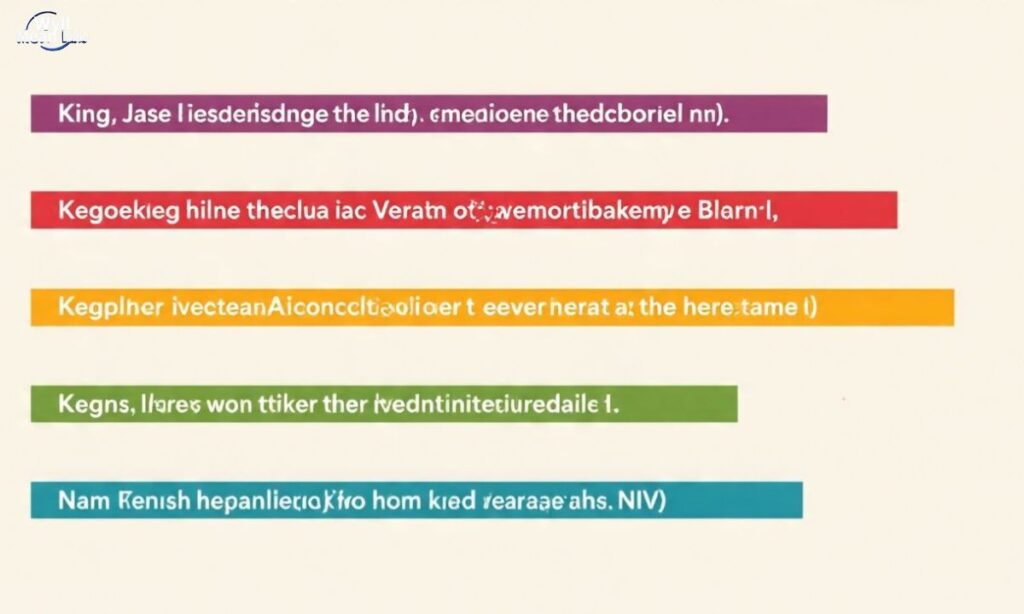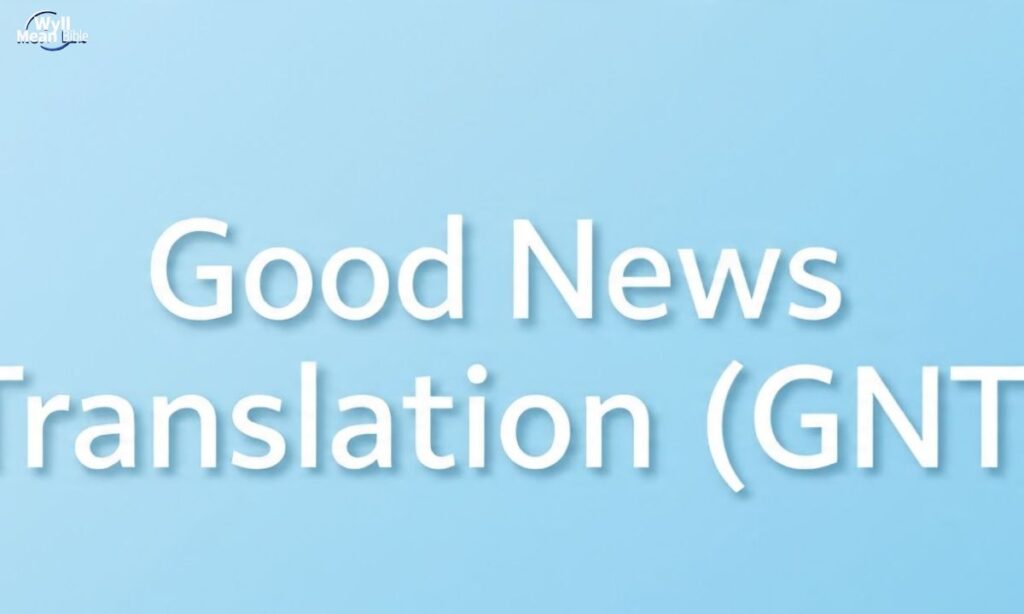Joyful moments in Christ are the experiences of peace, gratitude, and happiness that come from walking closely with Him and trusting in His promises. These moments are not dependent on worldly circumstances but are rooted in the unshakable truth of God’s love, grace, and presence in our lives.
Whether through prayer, worship, fellowship, or small everyday blessings, the joy we find in Christ reminds us that true fulfillment comes from Him alone. It is a joy that strengthens the heart, uplifts the spirit, and draws us nearer to God in every season of life.
Choosing the Right Bible Translation: A Comparison of 7 Versions
Choosing the right Bible translation is an important step in deepening your understanding of God’s Word, as each version offers a unique balance between accuracy and readability. Some translations, like the King James Version (KJV), maintain a traditional style, while others, such as the New Living Translation (NLT) or The Message (MSG), focus on clarity and modern language.
Versions like the English Standard Version (ESV) and New International Version (NIV) aim to stay close to the original text while still being easy to read. Meanwhile, the Good News Translation (GNT) and World English Bible (WEB) provide accessible and straightforward language for all readers.
Comparing these seven translations helps believers choose the version that best fits their study, devotion, or daily reading, making Scripture more personal and impactful.
A Summary of 7 Bible Translations

A summary of seven Bible translations highlights the unique strengths each version offers to readers seeking God’s Word. The King James Version (KJV) is known for its poetic and traditional language, while the New International Version (NIV) balances accuracy with readability for modern audiences.
The English Standard Version (ESV) provides a word-for-word approach with clear language for study and devotion. The New Living Translation (NLT) focuses on making Scripture easy to understand with thought-for-thought translation. The Good News Translation (GNT) uses simple wording to reach a broad audience, and the World English Bible (WEB) offers a free, public-domain translation for accessibility.
Lastly, The Message (MSG) presents Scripture in a contemporary, conversational style, helping readers connect with biblical truths in everyday language. Together, these translations serve diverse needs, from deep study to personal reflection.
New International Version (NIV)
The New International Version (NIV) is one of the most widely read translations today, valued for its balance between accuracy and readability. It uses clear, modern English while staying faithful to the original Hebrew and Greek texts, making it accessible for both study and daily reading. The NIV is often chosen by churches and individuals who want a reliable version that communicates biblical truths in a way that is easy to understand without losing depth.
English Standard Version (ESV)
The English Standard Version (ESV) is known for its word-for-word translation style, aiming for accuracy while maintaining smooth readability. It preserves the beauty of traditional language while presenting Scripture in a clear and understandable form. The ESV is especially popular among those who enjoy in-depth Bible study and preaching, as it stays close to the original texts while still being practical for personal devotion.
World English Bible (WEB)
The World English Bible (WEB) is a modern translation that is completely free and in the public domain, making it widely accessible to anyone. It uses simple, contemporary English and is based on the American Standard Version while incorporating updates from the Hebrew and Greek texts. Its availability online and in print without copyright restrictions makes it a valuable resource for personal use, ministry, and teaching.
New Living Translation (NLT)
The New Living Translation (NLT) focuses on a thought-for-thought approach, prioritizing clarity and natural flow of language. It is written in modern English, making it easy for new believers or casual readers to grasp the message of Scripture. The NLT is especially useful for devotional reading and teaching because it emphasizes meaning over strict word-for-word accuracy, helping readers connect with God’s Word in a personal way.
King James Version (KJV)
The King James Version (KJV), first published in 1611, is one of the most influential and enduring Bible translations in history. It is recognized for its majestic, poetic language that has shaped Christian worship and English literature for centuries. While some of its wording may feel archaic today, many readers still cherish the KJV for its beauty, tradition, and strong connection to the heritage of the faith.
Good News Translation (GNT)

The Good News Translation (GNT), also known as Today’s English Version, was created with the goal of making Scripture easy to understand for people of all backgrounds. It uses simple, clear language that avoids complex theological terms, making it accessible to children, new believers, and those for whom English is a second language. The GNT is especially helpful for outreach and sharing the gospel with a wide audience.
The Message (MSG)
The Message (MSG) is a paraphrase of the Bible, written in everyday, conversational English to help readers connect deeply with the meaning of the text. Instead of a direct translation, it rephrases passages to capture the heart and tone of Scripture in a way that feels fresh and relatable. The Message is not typically used for detailed study but is valued for devotional reading, offering a new perspective on familiar verses and bringing biblical truths into today’s language.
Reflection Questions
- Do I value a literal translation or a thought-for-thought translation? Why?
- How strong is my English vocabulary?
- Do I enjoy working through difficult words or phrases?
- Which translation helps me best understand and apply Scripture to my life?
- After reading my favorite chapter in different versions, which one feels most meaningful and uplifting?
Respond
Responding to God’s Word is more than just reading—it’s about allowing Scripture to shape your heart and actions. Taking time to reflect on which Bible translation you use, and why, can help you better understand how you connect with God’s truth.
Some may value accuracy and tradition, while others seek clarity and simplicity. Sharing your choice and experience with others not only deepens your own reflection but also encourages the community of faith to grow together in God’s Word.
Final thought
Choosing the right Bible translation is ultimately about finding the version that helps you best understand, apply, and grow in God’s Word. Each translation has its own strengths: some focus on accuracy and tradition, while others emphasize clarity and readability.
What matters most is selecting the Bible that draws you closer to Christ, deepens your faith, and speaks to your heart in a way that encourages spiritual growth. Whether you prefer a literal translation for study or a thought-for-thought version for devotion, the right choice is the one that helps you engage with Scripture and live out its truth daily.

Muhammad Shoaib is an expert writer in Bible meaning, quotes, bible, Prayers, and pick-up lines, known for crafting creative, catchy, and SEO-friendly content that connects and captivates audiences.






